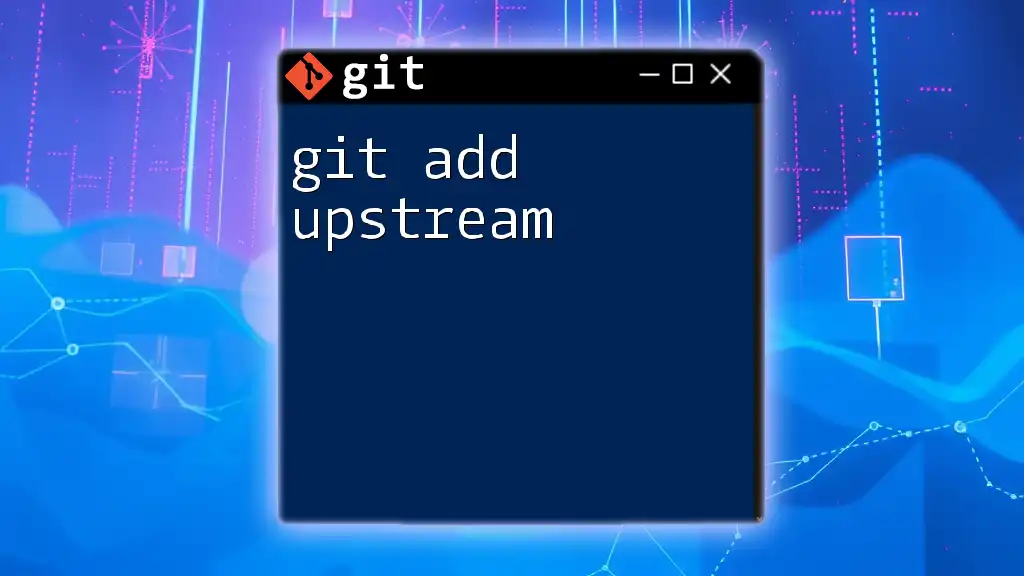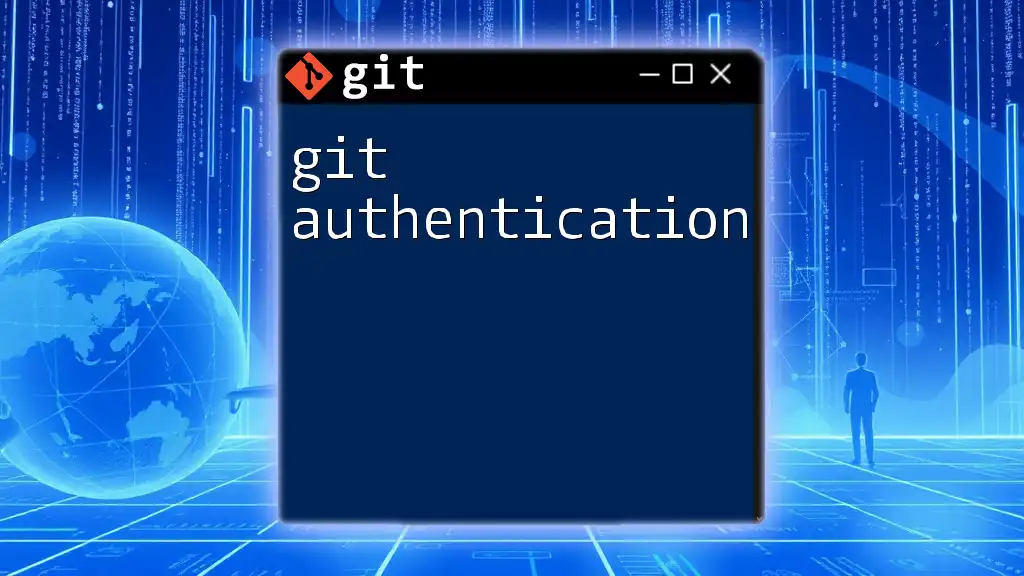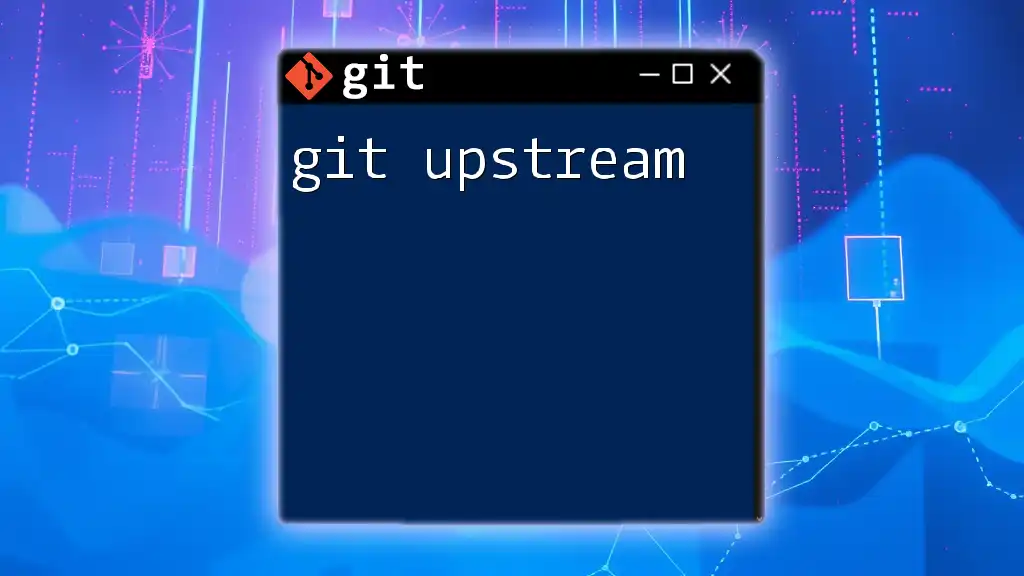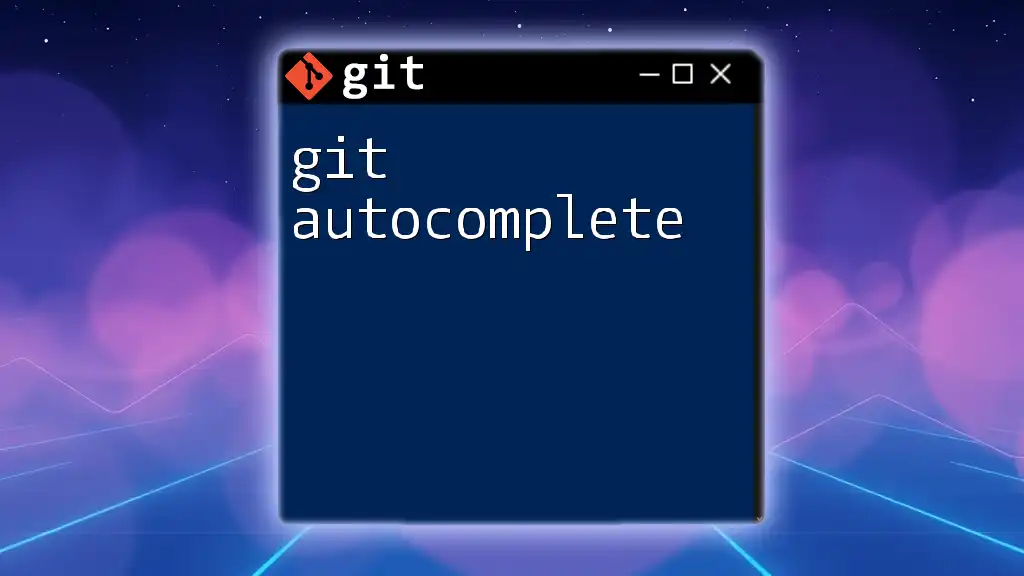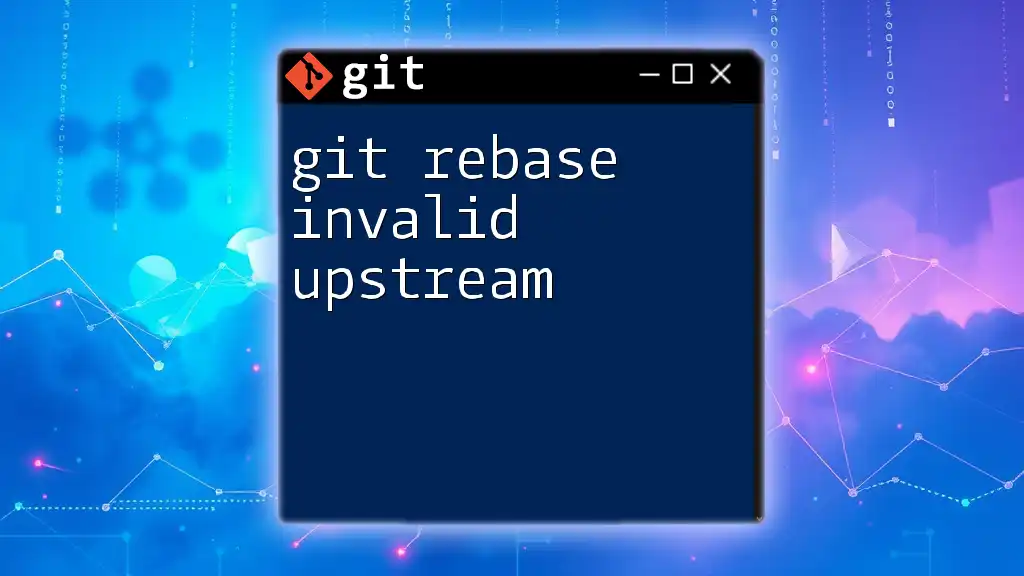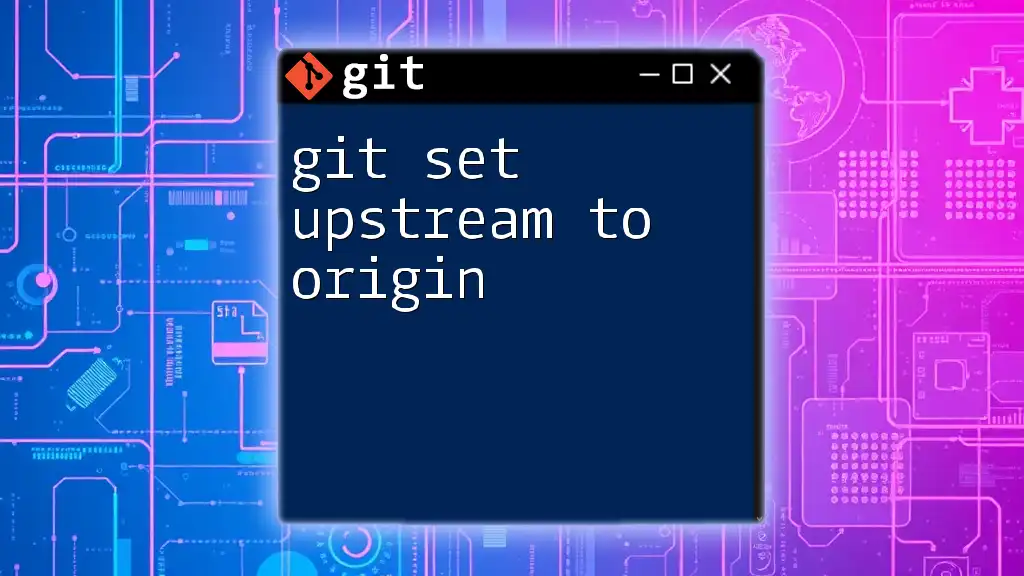To automatically set the upstream branch for a local Git branch when pushing for the first time, use the following command:
git push -u origin <branch-name>
Replace `<branch-name>` with the name of your current branch.
Understanding Upstream Branches
What is an Upstream Branch?
An upstream branch in Git serves as a reference point for your local branch, typically pointing to a remote counterpart. It indicates which remote branch your local branch is tracking, which is crucial for synchronizing changes between your local and remote repositories. Understanding this concept is foundational for efficient collaborative workflows.
Comparing local and remote branches, local branches reside on your development machine, while remote branches (such as those on GitHub or other hosting services) act as the shared state of the project. Setting an upstream branch ensures you can seamlessly push your changes and pull updates from the remote branch, which is essential for maintaining consistent progress in collaborative environments.
Why Set an Upstream Branch?
Setting an upstream branch provides several benefits:
-
Simplifies Workflow: With an upstream branch established, you can push and pull changes without repeatedly specifying the remote branch. For example, a simple `git push` command will suffice if your branch has an upstream set.
-
Facilitates Collaboration: When you work in teams, having an upstream branch enables all team members to easily track and integrate changes made by others.
-
Error Reduction: Automating this process reduces the risk of errors that can arise from miscommunication about which branches are being tracked.
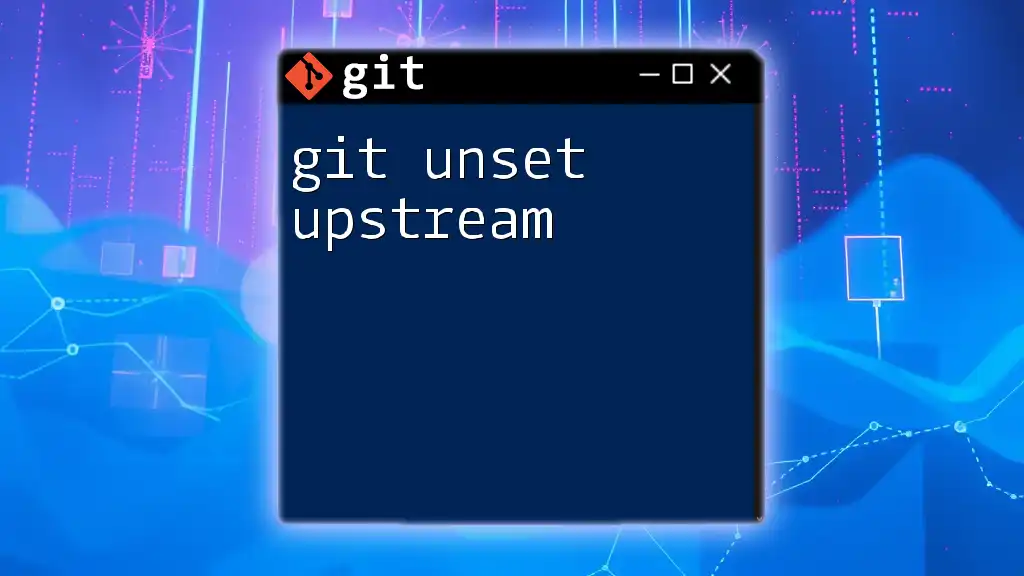
Setting Upstream Branches Manually
Basic Command for Setting Upstream
To set an upstream branch manually, you can use the following command:
git push --set-upstream origin <branch-name>
Here's a breakdown of each part of the command:
- `git push`: This command uploads your local branch commits to the remote repository.
- `--set-upstream`: This option tells Git to configure the source (upstream) branch for the current branch, creating a connection between your local and remote branches.
- `origin`: This is the default name Git uses for your remote repository. You could replace it with a different remote name if necessary.
- `<branch-name>`: Replace this with the name of your current branch.
By executing this command, you bind your local branch to the corresponding branch on remote, empowering you to use streamlined commands for future pushes and pulls.
Verifying Upstream Branch Configuration
After setting an upstream branch, it’s crucial to confirm that your configuration is correct. Use the following command to check which upstream branches are set:
git branch -vv
This command will display a list of all your local branches along with their tracking status. The output will show which branches are linked to their corresponding upstream branches, helping you verify that everything is correctly configured.

Automating Upstream Branch Configuration
Why Automate?
Automating the upstream branch setup can significantly enhance your workflow. Manual configuration can sometimes lead to human errors that delay development and introduce complications. By automating this process, you save time and maintain consistency within your projects, making it easy to switch branches or push changes without worrying about setting upstreams every time.
Using Git Configuration
You can simplify upstream configuration using Git’s built-in settings. One key setting to adjust is the `push.default` configuration:
git config --global push.default current
This command sets the default behavior to automatically push the current branch to a branch of the same name on the remote. Let’s explore the various options for `push.default`:
- simple: The default option in recent Git versions. Only pushes to the upstream branch if the name is the same.
- upstream: Pushes to the branch your local branch is tracking.
- matching: Pushes all branches that have matching names on the remote.
- current: Pushes the current branch to its upstream branch.
Setting Up an Automatic Upstream with Git Aliases
Aliases in Git allow you to create shortcuts for commonly used commands. You can create an alias that automatically sets upstream branches. Use the following command to define it:
git config --global alias.up '!git push --set-upstream origin $(git rev-parse --abbrev-ref HEAD)'
After creating this alias, you can simply type:
git up
This command will automatically push the current branch to the upstream on `origin`, making it a powerful tool for quick setups.
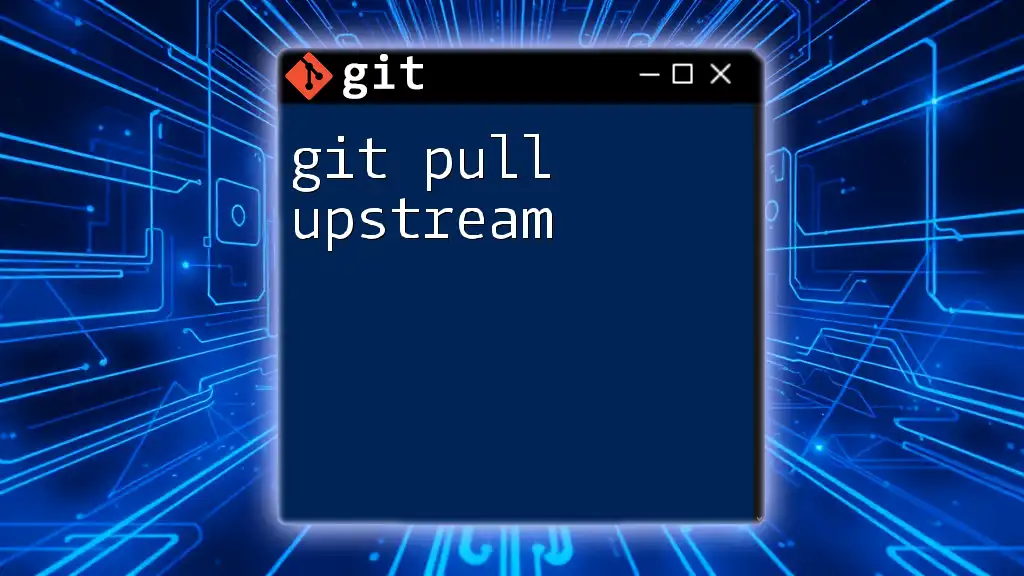
Best Practices for Managing Upstream Branches
Naming Conventions
When naming branches, strive for clarity and consistency. This is essential, especially in collaborative environments, as descriptive names help team members understand the purpose of each branch. Consider including prefixes to define the type of work, such as `feature/`, `bugfix/`, or `hotfix/`.
Regularly Updating Your Upstream Configuration
It's important to keep your local repository in sync with the upstream branch. Regularly running the following commands ensures that you fetch and incorporate updates from the remote:
git fetch --all
git pull --rebase
Using `git fetch --all` pulls down all branches and tags, while `git pull --rebase` updates your current branch with changes from the upstream, maintaining a clean project history.
Utilizing Hooks for Automation
Git hooks are scripts that can automate various tasks. Using a post-checkout hook, you can set the upstream branch automatically after checking out a new branch. Here’s an example of such a script:
#!/bin/sh
git push --set-upstream origin $(git rev-parse --abbrev-ref HEAD)
You can add this script to your `.git/hooks/post-checkout` file, but remember to make it executable. This way, every time you check out a new branch, it will automatically set the upstream link, adding efficiency to your workflow.

Common Pitfalls and Troubleshooting
Forgetting to Set Upstream
One common oversight is forgetting to set the upstream branch. This can lead to errors when attempting to push or pull changes. If you find yourself in this situation, you can force Git to set the upstream branch with the following command:
git push -u origin <branch-name>
This command will both push your branch and set the upstream reference at the same time.
Conflicts in Upstream Settings
Conflicts can occur if multiple team members manipulate upstream settings. You can diagnose these issues by running:
git status
This command provides insight into your current branch state and any potential inconsistencies.
Fixing Incorrect Upstream References
Should you need to change the upstream branch after it’s been set incorrectly, you can easily do this with:
git branch --set-upstream-to=origin/<new-branch>
This command directs your local branch to track a different remote branch, ensuring everything aligns properly.

Conclusion
Setting and automating upstream branches in Git is essential for maintaining an efficient workflow. By understanding the importance of upstream branches and implementing automated configurations, you can streamline your development process, reduce errors, and enhance collaboration. Regularly updating your settings and following best practices will further solidify your Git proficiency and improve your project outcomes.

Call to Action
Explore more about Git commands and best practices on our platform. Subscribe for updates and join our community for discussions, tips, and insights on mastering version control with Git. We welcome your comments and questions to foster a collaborative learning space!









